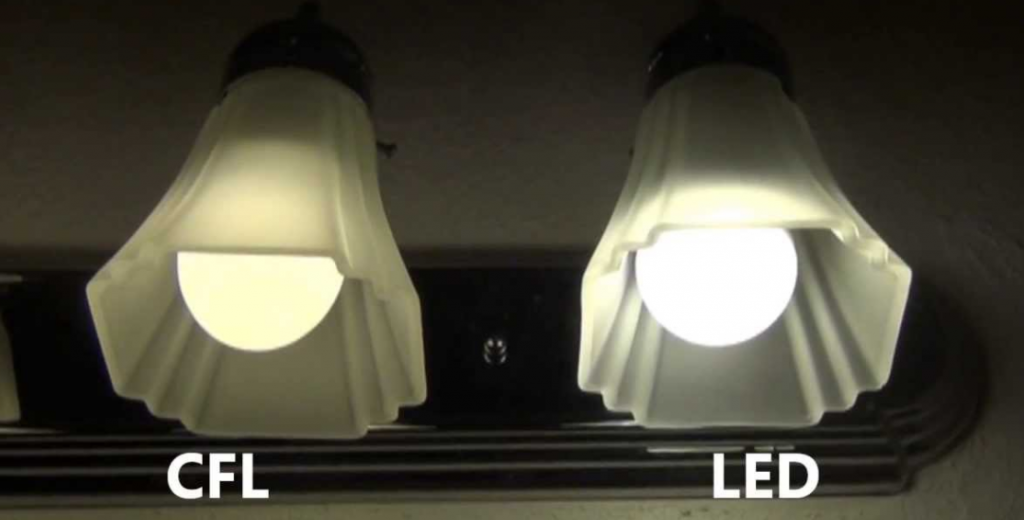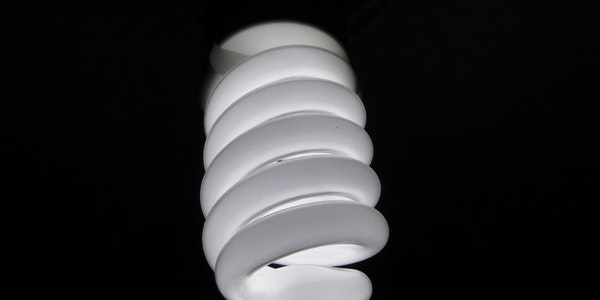For a long time, the problem of light decay and life of compact energy-saving fluorescent tubes has been paid attention by most domestic manufacturers. With the revision of the national standard for self ballasted fluorescent lamps and the continuous reduction of the diameter of compact energy-saving fluorescent tubes (CFL), the phosphors bear more and more load, so it is particularly important to solve the problem of light decay.
As far as compact energy-saving fluorescent lamp is concerned, its light attenuation mainly comes from the following aspects:
- The degradation of phosphors in the discharge environment results in the decrease of luminous efficiency.
- In the process of ignition, an opaque yellow black light absorbing film is formed on the inner surface of the phosphor layer, which reduces the probability of the phosphor receiving ultraviolet radiation.
- After long-term ignition, the inner wall of glass tube blackens, resulting in the decrease of light transmittance.
Light decay mechanism of compact fluorescent lamp
For the compact fluorescent tubes produced around the globe, the main reason of light decay is that the nitrocellulose binder in the powder layer of the preformed glass tube can not be completely baked in the tube baking stage when the traditional organic coating solution is used, which will lead to the formation of black light absorbing film of carbon and mercury oxide on the inner surface of the phosphor layer, which makes the powder layer colored (blackened).
The second reason for light decay is that the glass tube produced in China has high sodium content and severe light-induced deterioration. During the lamp life, Mercury will penetrate into the glass, and the sodium in the glass diffuses to the powder layer, and forms black sodium amalgam after amalgam, which pollutes the phosphor particles.
The third reason is that the quality of the phosphor itself is not high, there are impurities on the surface, easy to absorb mercury oxide.
Deterioration of phosphors
The degradation of phosphors is mainly in low voltage discharge 185nm Short UV radiation is caused, while ideal low voltage mercury discharge only produces 253.7nm In this way, the phosphor is in the ideal condition without light decay. But it’s actually accompanied by two hundred and fifty-three point seven nm There is always a certain proportion of ultraviolet radiation 185nm Short UV generation, 185nm The generation probability of short ultraviolet is mainly affected by the kinetic energy of electrons in the discharge tube.
If the kinetic energy of the electrons is too high, when these high-energy electrons collide with mercury atoms to produce energy transfer, the energy obtained by the mercury atoms is high, and the probability of transitioning to 6’P increases, that is, the probability of exciting 185nm ultraviolet rays increases.
The electron kinetic energy is mainly affected by the cathode emission characteristics and the argon pressure in the tube. These factors are mainly determined by the exhaust process. For example, the cathode emission characteristics are poor due to improper decomposition of the cathode.
Only by increasing the ignition voltage and cathode potential drop, that is, by increasing the electrode temperature, can the discharge be generated, and the high cathode potential drop will inevitably lead to a large number of high-energy electrons,
At the same time, if the argon pressure in the tube is low, that is, the electron free path is long, the electron can obtain high energy, and if the argon pressure is too high, the ignition voltage will increase, that is, the electron energy will increase.
Therefore, a good exhaust process and the appropriate pressure of argon filling is to reduce the pressure 185nm The key of short UV generation is to reduce the deterioration of phosphor.
In addition, how to keep the luminous efficiency of the phosphor at a high level after the lamp is made, the powder coating and tube baking process are the key. In fact, when a good phosphor is mixed into a slurry, the ball milling process should only play the role of dispersing the phosphor without grinding the phosphor, otherwise the luminous efficiency of the phosphor will be reduced. This requires the addition of a small diameter ball (e.g Φ The milling time should be shortened or not. At the same time, we should try our best to reduce the baking temperature and shorten the baking time, and the baking temperature is more important.
As we all know, in order to help the decomposition of adhesives (such as nitrocellulose), oxygen or air is often introduced into the baking tube. The introduction of pure oxygen will make the combustion reaction of nitrocellulose occur violently, and generate a lot of heat, resulting in the instant rise of the temperature of the phosphor particles.
This temperature can not be achieved when air is introduced to help the decomposition and combustion, because there is a large proportion of oxygen in the air N02,C02 Although this will prolong the baking time, the actual temperature of phosphor particles in the baking tube is greatly reduced, and the luminous efficiency is better maintained. Therefore, a large number of experiments are needed to further explore how to choose a more appropriate proportion of pure oxygen and air mixture to help the baking tube.
Formation of light absorbing film on phosphor surface
The light absorbing film on the phosphor surface is mainly opaque mercury and mercury oxide, which is bound to block the full excitation of ultraviolet light on the phosphor and reduce the light output.
The formation of the light absorbing film is mainly due to the impurity gases in the lamp tube, such as water vapor and CO2 We know about steam CO2、CO And hydrocarbons will decompose or split near the high temperature cathode in the discharge environment, resulting in black carbon, which is directly deposited on the inner wall of the phosphor to blacken the lamp tube, and the oxygen produced is mixed with carbon Hg Forming yellow and black HgO and Hg2O, which is attached to the inner wall of the phosphor to make the lamp yellow and black N. It can also be synthesized with Rou at high temperature Hg3N2 These impurity gases not only exist due to insufficient baking, incomplete degassing, poor decomposition and impure inflation, but also cause nitrocellulose residue in the subsequent ignition process of the lamp due to poor baking CO 、 CO2 and N02 And so on.
With the prolongation of the lamp ignition time, the cathode emitting materials are continuously sputtered and evaporated to cover the powder layer near the cathode. These sputtered materials also combine with mercury to form an opaque light absorbing film. It can be seen that the reasonable electrode structure, the appropriate working temperature, that is, the cathode emitters keep a low work function, low evaporation rate and strong ion bombardment resistance are the keys to reducing the light-absorbing film near the end zone.
We know, Hg0 and amalgam is unstable at high temperature. The sediments are mainly distributed in the relatively low temperature area. For example, the yellow black part of the bend is heavier. Heating these yellow black parts at high temperature can make them adsorb on the surface of these parts HgO. The results show that the absorption film has a great influence on the light decay.
The literature shows that HgO The adsorption on the surface of phosphor is largely determined by the charge tendency of phosphor HgO On the contrary, HgO Once contacted with the phosphor, more positive and negative charges will be generated on the surface of both phosphors, which are difficult to fall off due to strong electrostatic adsorption HgO The adsorption capacity is large, that is, the blackening is serious, and the light decay is also large. Therefore, we should try to reduce the possibility of electrifying the phosphor, such as using deionized water to clean the glass tube, using dispersant and adhesive to prepare the powder slurry without impurities, and baking gas should be pure and dry.






